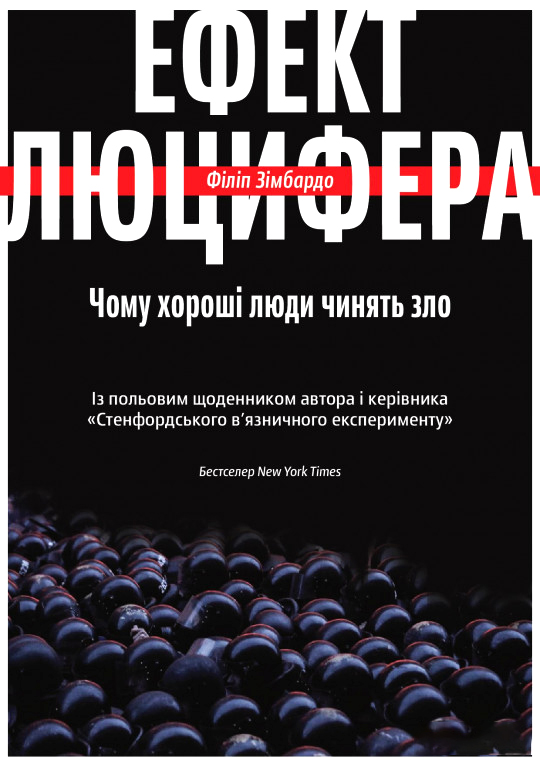Читати книгу - "Прокрастинація"
Шрифт:
Інтервал:
Додати в закладку:
116
Ritter, M. (2007, March 27). It’s something we all do. San Jose Mercury News, p. 3 A.
117
Barkley, R., et al. (2008), цит. роб.
118
Там само, с. 51.
119
Bronowski, J. Referenced in Barkley, R. (2008), цит. роб., с. 51.
120
Barkley, R. (2008), цит. роб., с. 51.
121
Meaux, J., & Chelonis, J. (2003). Time perception differences in children with and without ADHD. Journal of Pediatric Health Care, 17(2), 64–71.
122
Barkley, R., et al. (2008), цит. роб., с. 52.
123
Ritter, M. (2007, March 27), цит. роб.
124
Grady, C., Springer, M., Hongwanishkul, D., McIntosh, A., & Wino-cur, G. (2006). Age-related changes in brain activity across the adult lifespan. Journal of Cognitive Neuroscience, 18, 227–241.
125
Barkley, R., et al. (2008), цит. роб.
126
Там само.
127
Shaw, P., Rapoport, J., & Evans, A. (2007). ADD at the far end of a continuum of normal traits. Proceedings of the National Academy of Sciences, Nov. 12, 2007.
128
Hallowell, E., & Ratey, J. (2005), цит. роб., с. 60.
129
Barkley, R., et al. (2008), цит. роб.; Hallowell, E., & Ratey, J. (2005), цит. роб.; Ratey, J. (2008). Spark: The revolutionary new science of exercise and the brain. New York: Little Brown.
130
Barkley, R., et al. (2008), цит. роб.; Shaw, P., Rapoport, J., & Evans, A. (2007), цит. роб.
131
Restak, R. (2003). The new brain. Emmaus, PA: Rodale Press, p. 45.
132
Schwartz, E. (1994). Interrupt-driven, Wired magazine, as quoted in Restak, R. (2003), цит. роб., с. 45.
133
Restak, R. (2003), цит. роб., с. 48.
134
Kramer, P. (2005). Against depression. New York: Penguin
135
Там само.
136
Hollon, S., Jarrett, R., Nierenberg, A., Thase, M., Trivedi, M., & Rush, A. (2005). Psychotherapy and medication in the treatment of adult and geriatric depression: Which monotherapy or combined treatment? Journal of Clinical Psychiatry, 66(4), 455–468.
137
Ratey, J. (2008), цит. роб.
138
Rosenthal, N. (2006). Winter blues. New York: Guilford Press.
139
Там само.
140
Там само, с. 78.
141
Там само.
142
Schwartz, J. M. (1996). Brain lock: Free yourself from obsessive-compulsive disorder. New York: Harper Collins.
143
Там само.
144
Neziroglu, F., Bubrick, J., & Yaryura-Tobias, J. A. (2004). Overcoming compulsive hoarding. Oakland, CA: New Harbinger Publications.
145
Там само, с. 37.
146
Saxena, S., Brody, A. Maindment, K., Smith, E. Zohrabi, N., Katz, E., Barker, S., & Baxter, L. (2004). Cerebral glucose metabolism in obsessivecompulsive hoarding. American Journal of Psychiatry, June, 161, 1038–1048.
147
Saxena, S. (2007). Is compulsive hoarding a genetically and neuro-biologically discrete syndrome? American Journal of Psychiatry, 164(3), 380–384.
148
Sapolsky, R. (1994). Why zebras don’t get ulcers. New York: W. H. Freeman and Co.
149
Sapolsky, R. (1992). Stress, the aging brain, and the mechanisms of neuronal death. Cambridge, MA: MIT Press.
150
Kramer, P. (2005), цит. роб.; Sapolsky, R. (1992), цит. роб.
151
Flaherty, A. (2004). The midnight disease: The drive to write, writer’s block and the creative brain. Boston: Houghton-Mifflin.
152
Dement, W, & Vaughn, C. (2000). The promise of sleep. New York: Bantam Dell.
153
Dahl, R. E. (1999). In K. L. Wahlstrom (Ed.), Adolescent sleep needs and school starting times (pp. 29–34). Bloomington, IN: Phi Delta Kappa Educational Foundation, quoted in Dawson, P., & Guare, R. (2004), цит. роб., с. 85.
154
Dement, W., & Vaughn, C. (2000), цит. роб.
155
Там само.
156
Kramer, P. (2005), цит. роб.
157
Flaherty, A. (2004), цит. роб., с. 147.
158
Kagan, J., & Snidman, N. (2004). The long shadow of temperament. Cambridge, MA: Harvard University Press.
159
Там само; Cozolino, L. (2006). The neuroscience of human relationships. New York: W. W. Norton.
160
Steel, P. (2007). The nature of procrastination: A meta-analytic and theoretical review of quintessential self-regulatory failure. Psychological Bulletin, 133(1), 65–94.
161
The immigrant experience (2001). Northwest Regional Educational Laboratory. Запозичено 20 травня 2008 р. з сайту www.nwrel.org/cnorse/booklets/immigration/4.html.
162
First in my family: A profile of first-generation college students at four-year institutions since 1971 (2007). UCLA Higher Education Research Institute. Запозичено 20 травня 2008 р. з сайту www.gseis.ucla.edu/heri/PDFs/pubs/briefs/FirstGenResearchBrief.pdf.
163
Pally, R. (2007). The predicting brain: Unconscious repetition, conscious reflection and therapeutic change. International Journal of PsychoAnalysis, 88(4), 861–881, p. 861. See also Hawkins, J. (2004). On intelligence. New York: Henry Holt.
164
LeDoux, J. (1998). The emotional brain. New York: Simon and Schuster.
165
Rice, K. G., & Ashby, J. S. (2007). An efficient method for classifying perfectionists. Journal of Counseling Psychology, 54(1), 72–85.
166
Khan, M. (1964). Ego distortion, cumulative trauma, and the role of reconstruction in the analytic situation. International Journal of Psychoanalysis, 45, 272–279.
167
Winnicott, D. W. (1953). Transitional objects and transitional phenomena: A study of the first not-me possession. International Journal of Psycho-Analysis, 34, 89–97; Bettelheim, B. (1987). A good enough parent. New York: Alfred A. Knopf.
168
Tronick, E. Z., & Gianino, A. (1986). Interactive mismatch and repair: Challenges to the coping infant. Zero to Three. February,
Увага!
Сайт зберігає кукі вашого браузера. Ви зможете в будь-який момент зробити закладку та продовжити читання книги «Прокрастинація», після закриття браузера.
























